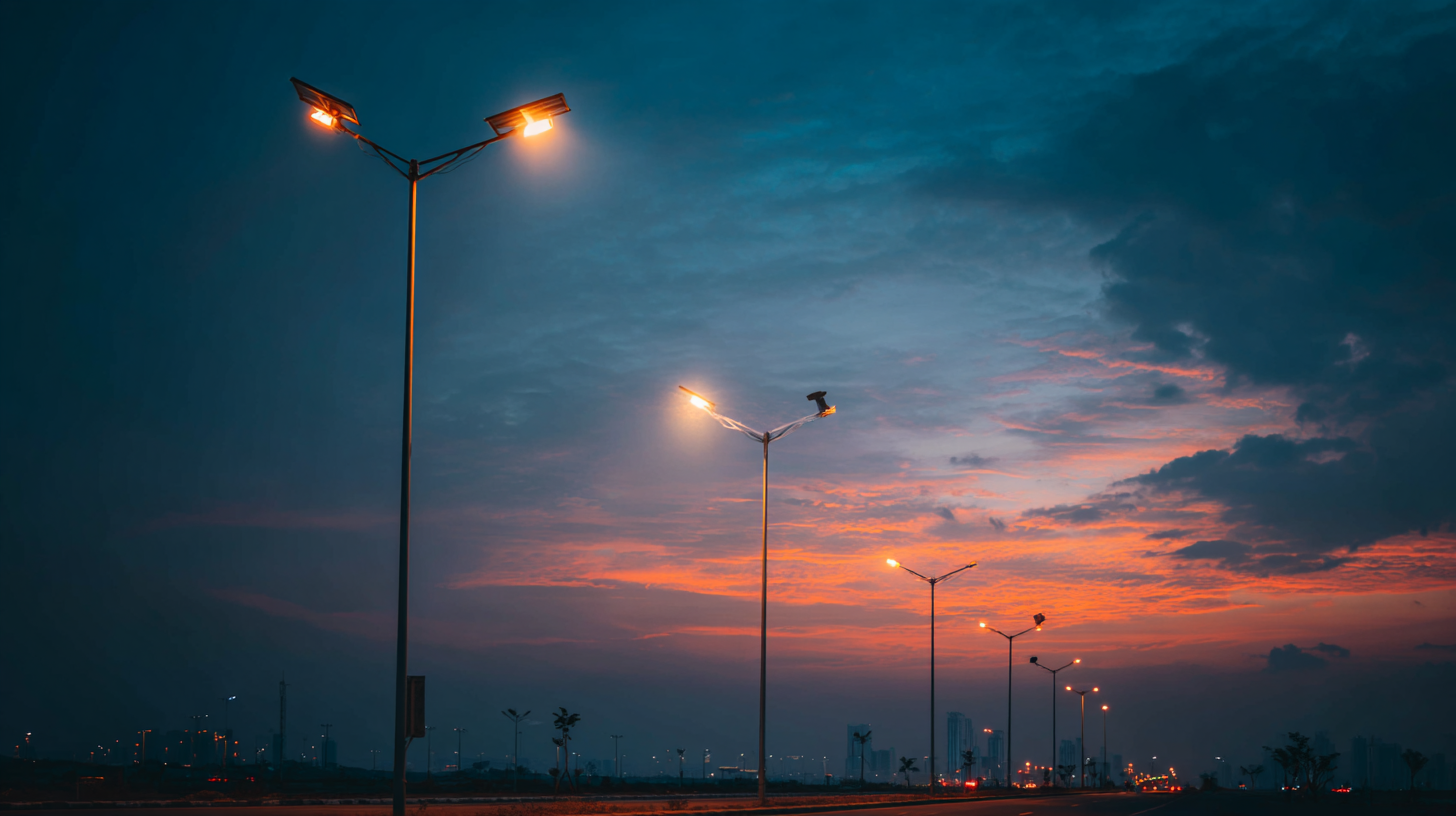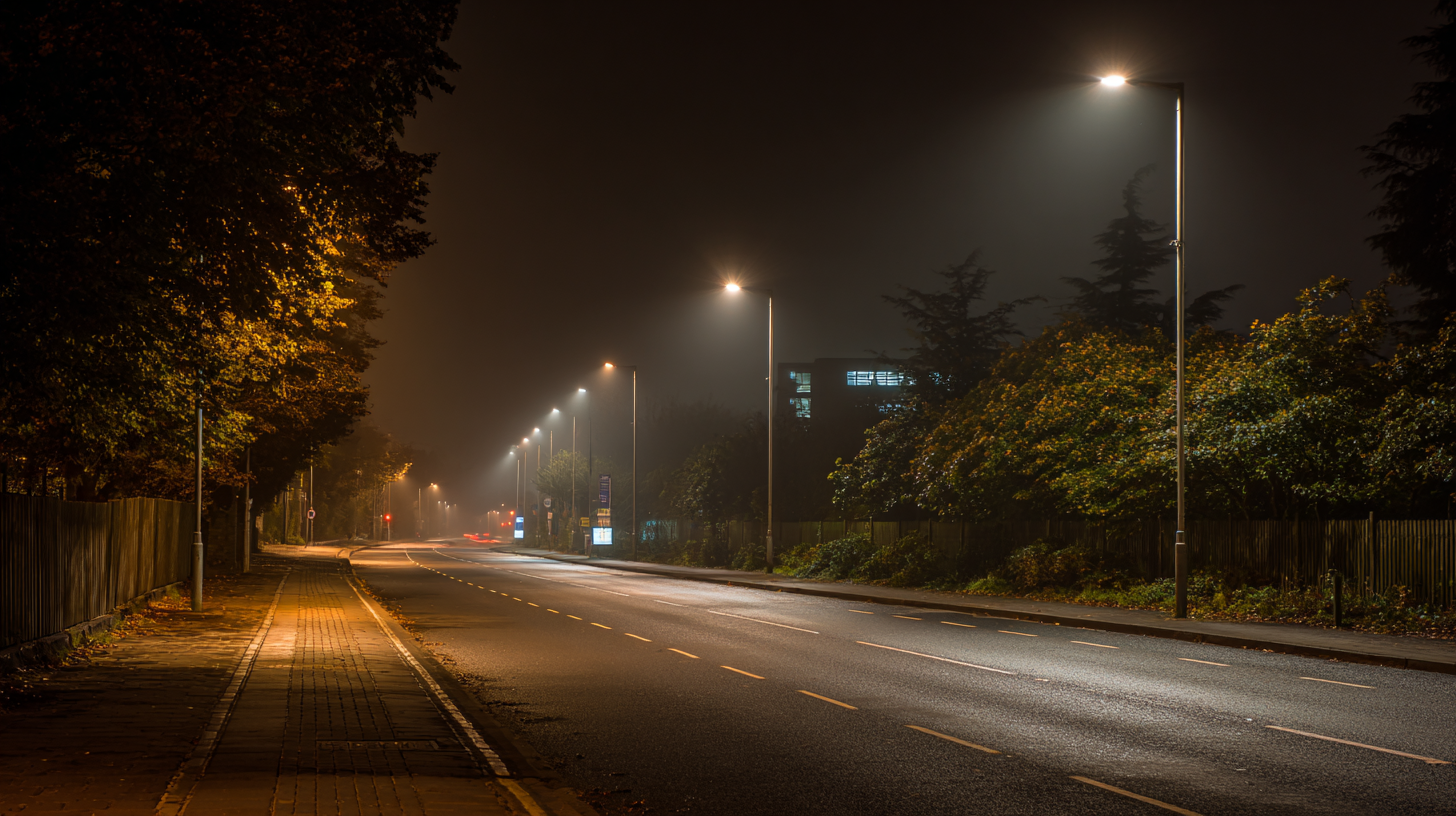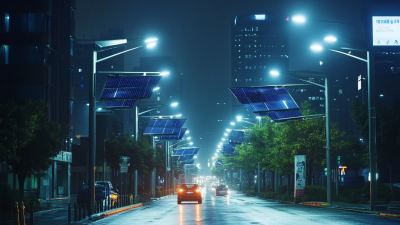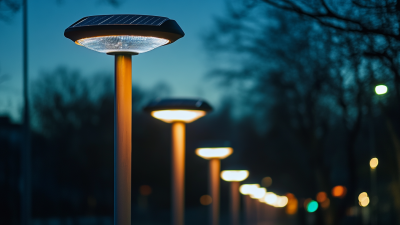The Future of Urban Lighting How Solar Street Lights Are Transforming Cities
The advent of solar street lights is revolutionizing urban lighting, marking a significant shift towards sustainable and energy-efficient solutions for cities worldwide. According to a recent report by the International Renewable Energy Agency (IRENA), the solar lighting market is projected to grow dramatically, with increasing awareness of environmental sustainability and the need for resilient infrastructure.
As cities face rising energy costs and the challenges posed by climate change, solar street lights provide an innovative answer, potentially reducing operational costs by up to 80%
while contributing to the reduction of carbon emissions. Their ability to harness renewable energy not only enhances urban safety but also supports the transition towards greener urban environments.
 By illuminating public spaces sustainably, solar street lights are not just enhancing the aesthetic appeal of cities but are also paving the way for smarter, more sustainable urban planning.
By illuminating public spaces sustainably, solar street lights are not just enhancing the aesthetic appeal of cities but are also paving the way for smarter, more sustainable urban planning.
Understanding the Basics of Solar Street Lights and Their Technology
Solar street lights are revolutionizing urban landscapes, offering an innovative and sustainable solution for city illumination. These advanced lighting systems typically consist of solar panels, LED lights, and rechargeable batteries, allowing them to harness solar energy during the day and provide illumination at night. According to a report by the International Renewable Energy Agency (IRENA), the global market for solar lighting is projected to grow by 23% annually, reflecting an increased demand for energy-efficient and eco-friendly solutions in urban planning.
The technology behind solar street lights is continually evolving, integrating smart features such as motion sensors and remote monitoring systems. This not only enhances energy management but also improves safety in public spaces. A study conducted by the U.S. Department of Energy revealed that LED technology can reduce energy consumption by up to 75% compared to traditional street lighting. Moreover, solar street lights contribute to decreased urban heat island effects and lower carbon emissions, aligning with global efforts to combat climate change. As cities embrace these innovations, the implementation of solar street lights could lead to significant improvements in both the environment and public safety.

Benefits of Integrating Solar Street Lights into Urban Environments
The integration of solar street lights into urban environments offers a sustainable solution to many pressing challenges faced by cities today. One of the primary benefits is the significant reduction in energy costs. Traditional street lighting typically relies on electricity from the grid, leading to high monthly expenses for municipalities. In contrast, solar street lights harness renewable energy from the sun, resulting in lower operational costs and allowing cities to allocate funds towards other essential services.
Another advantage of solar street lights is their role in enhancing public safety and community well-being. By providing consistent and reliable illumination, these lights improve visibility in public spaces, which deters crime and encourages nighttime activities. Additionally, solar street lights can be installed in remote or underserved areas where conventional infrastructure may be lacking, thereby promoting equity in urban lighting and fostering a sense of safety and inclusion among residents. Overall, the shift towards solar street lighting not only supports environmental sustainability but also enhances the quality of life in urban communities.
The Future of Urban Lighting: How Solar Street Lights Are Transforming Cities
| City |
Number of Solar Street Lights |
Estimated Annual Energy Savings (kWh) |
Reduction in CO2 Emissions (tons) |
Improvement in Public Safety |
| Los Angeles |
10,000 |
5,000,000 |
2,100 |
Enhanced visibility leading to a 15% drop in crime |
| New York |
8,500 |
4,200,000 |
1,800 |
Increased night usage of parks by 20% |
| London |
12,000 |
6,000,000 |
2,500 |
Lowered accidents in poorly lit areas by 25% |
| Tokyo |
15,000 |
7,500,000 |
3,000 |
Improved nighttime pedestrian traffic |
| Sydney |
5,000 |
3,000,000 |
1,200 |
Enhanced user satisfaction in public spaces |
Steps to Implement Solar Street Lighting in Your City
Implementing solar street lighting in urban areas has become a transformative step towards cleaner and more sustainable cities. Recent initiatives across various cities highlight the potential benefits and strategies for integrating solar solutions. In Kenya, a city is set to achieve an impressive 98% lighting coverage through a dedicated solar street light project, underscoring the importance of clean energy in urban planning. The adoption of solar lighting not only aims to improve safety and visibility but also contributes to a broader clean energy push that municipalities are increasingly prioritizing.
In the United States, several local governments are making significant strides in installing solar-powered street lights. For instance, a city council has approved the installation of solar lighting along busy roads, enhancing public safety while reducing energy costs. Fort Worth is also moving forward with plans to roll out thousands of solar street lights across multiple neighborhoods, projecting significant savings on energy expenses. As cities confront issues like theft of copper wiring from traditional street lights, solar options emerge as not only cost-effective but also an innovative solution to modern urban challenges.
Challenges and Solutions for Adopting Solar Street Lights
As cities look towards sustainable solutions for urban lighting, solar street lights emerge as a transformative technology. However, the transition to solar energy-powered lighting systems presents several challenges. One significant issue is the initial installation cost, which can be higher than conventional lighting solutions. Cities must evaluate their budgets and explore potential funding sources, such as grants and public-private partnerships, to offset these expenses.
Another challenge is the variability of solar energy, which depends on weather conditions and geographic location. In regions with less sunlight, maintaining consistent lighting levels can be problematic. To mitigate this, municipalities can invest in solar street lights with energy storage systems that store excess power during sunny days, ensuring reliable lighting even during overcast periods.
**Tips**: When considering the adoption of solar street lights, city planners should conduct thorough site assessments to determine optimal installation locations for maximum sunlight exposure. Additionally, collaborating with experienced vendors who provide warranties and maintenance options can significantly enhance the longevity and effectiveness of solar lighting systems. By addressing these challenges with innovative solutions, cities can pave the way for a brighter, more sustainable future.
The Future of Urban Lighting: Solar Street Lights Adoption Trends
This chart illustrates the adoption trends of solar street lights across various cities from 2018 to 2023. The increasing trend highlights the growing momentum towards sustainable urban lighting solutions.
Future Innovations in Solar Street Lighting and Urban Development
The future of urban lighting is increasingly leaning towards sustainable solutions, particularly with the rise of solar street lights. These innovative lighting systems capitalize on solar energy, providing a cleaner and more efficient alternative to traditional street lighting. With growing urbanization and the need for smart city solutions, solar street lights are transforming how cities illuminate public spaces, contributing to energy conservation and reducing carbon footprints.
TIP: Consider the integration of smart technology in street lighting systems. Features like remote monitoring and automatic dimming can further enhance energy efficiency and maintenance, making urban areas safer and more responsive to changing conditions.
As urban development continues to prioritize sustainability, solar street lights represent not just a trend but a pivotal component in the evolution of smart urban infrastructure. With projections indicating significant growth in the street furniture market, the demand for innovative lighting solutions is expected to rise. The ongoing advancements in solar technology and intelligent lighting will shape the future of our cities, ensuring they are well-lit, environmentally friendly, and equipped to meet the needs of modern urban dwellers.
TIP: Engage with local governments and communities to assess their specific lighting needs, ensuring that solar solutions are tailored to enhance public safety and urban aesthetics while promoting community involvement in the transition to greener technologies.


 By illuminating public spaces sustainably, solar street lights are not just enhancing the aesthetic appeal of cities but are also paving the way for smarter, more sustainable urban planning.
By illuminating public spaces sustainably, solar street lights are not just enhancing the aesthetic appeal of cities but are also paving the way for smarter, more sustainable urban planning.







